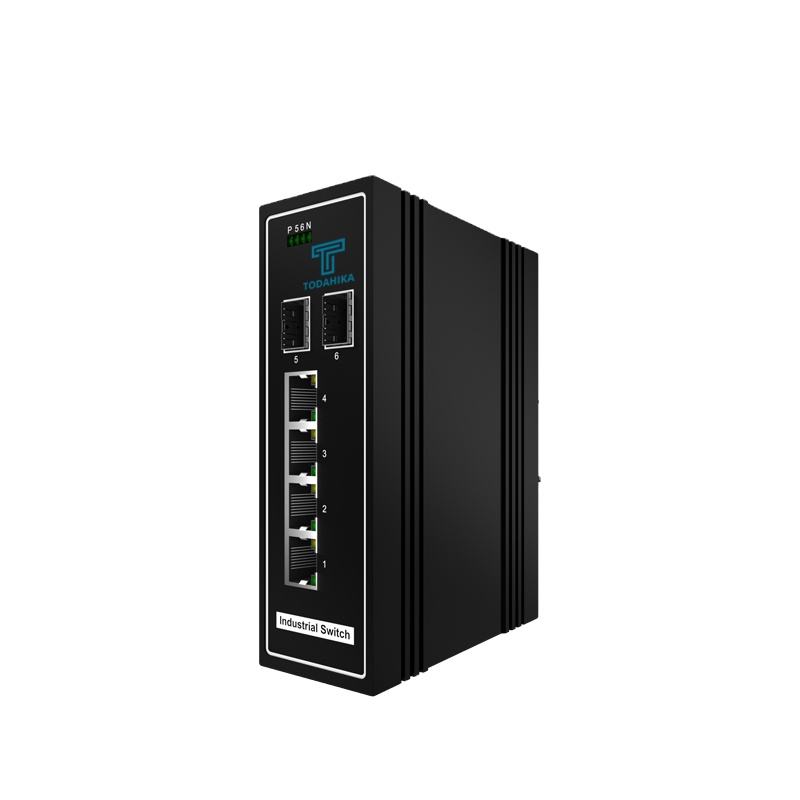In the digital age, network infrastructure plays a vital role as businesses and homes rely on multiple devices connected to the Internet. One of the key components of this infrastructure is the network switch, a device that ensures the smooth flow of data between devices in the local network. But what exactly is a network switch? How does it work?
What is a network switch?
A network switch is a hardware device that connects multiple devices within a local area network (LAN). These devices can include computers, printers, servers, IP phones, and security cameras. Unlike a simple network hub that broadcasts data to every connected device, a switch is intelligent: it directs data to the specific devices that need it, optimizing network performance and reducing unnecessary traffic.
In business and home networks, switches serve as central points of connectivity, allowing devices to communicate with each other efficiently. This is critical for environments with high data demands, as the switch can handle large volumes of traffic without overwhelming the network.
How do network switches work?
The main function of a network switch is to receive, process, and forward data to the correct device. Here is a step-by-step description of how the switch manages this process:
Receiving packets: When a device on a network, such as a computer, sends data, the data is broken down into smaller units called packets. These packets are then sent to the switch.
Learn MAC Address: Every device on the network has a unique identifier called a MAC (Media Access Control) address. The switch learns the MAC addresses of all connected devices and stores them in a table, allowing it to identify where each device is on the network.
Direct data to the correct destination: Using a MAC address table, the switch can determine the exact destination of each packet. Instead of broadcasting data to all devices, it only sends packets to the target device, which saves bandwidth and increases network speed.
Manage traffic efficiently: For large networks with multiple devices exchanging large amounts of data, switches can prevent data collisions and network congestion. By intelligently directing traffic, the switch ensures that each device receives data without delay.
Why are network switches important?
In any organization or setup where multiple devices need to communicate, switches are critical for efficient data management. Here are some key reasons why network switches are essential:
Improved network performance: By steering data precisely, the switch optimizes bandwidth usage, reducing unnecessary load on the network and improving performance.
Enhanced security: Managed switches provide features that help control network access, detect threats, and segment traffic to add a layer of security to sensitive information.
Scalability: As your business grows, switches can easily add more devices to the network without compromising speed or performance.
Reliability: Switches are designed to handle continuous data flow and are resilient to ensure uninterrupted connectivity across the entire network.
Type of network switch
There are many types of network switches, each designed for different needs:
Unmanaged switches: These are simple plug-and-play devices typically used in home or small business networks. They require no configuration and automatically manage traffic between connected devices.
Managed switches: These switches offer more control and customization options, making them suitable for larger or more complex networks. Administrators can configure settings to prioritize certain types of traffic, control access, and monitor network health.
PoE (Power over Ethernet) switches: These switches can transmit power over the same cables used for data, making them ideal for devices like IP cameras and wireless access points where power outlets may be limited.
In conclusion
A network switch is more than just a connector for your device; it’s an essential component that keeps your network running smoothly, securely, and efficiently. By directing data only to its intended recipients, switches help maintain speeds, reduce congestion, and provide a reliable backbone for the modern digital environment. Whether in a busy enterprise network or a smart home, network switches are at the heart of seamless connectivity that supports the demands of today’s connected world.
As networking technology continues to advance, switches are becoming more powerful and feature-rich, providing businesses and homes with more scalability, security, and control options. As networks continue to grow and evolve, the importance of efficient data management through switches will only grow.
Post time: Oct-29-2024




